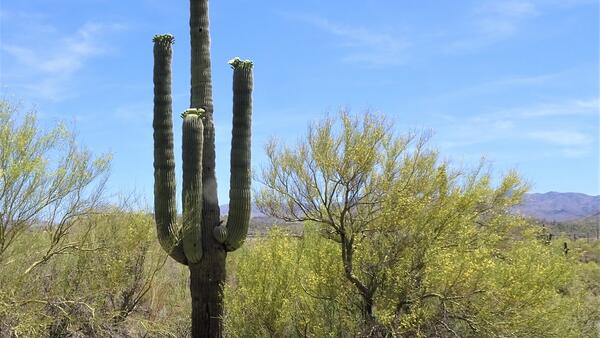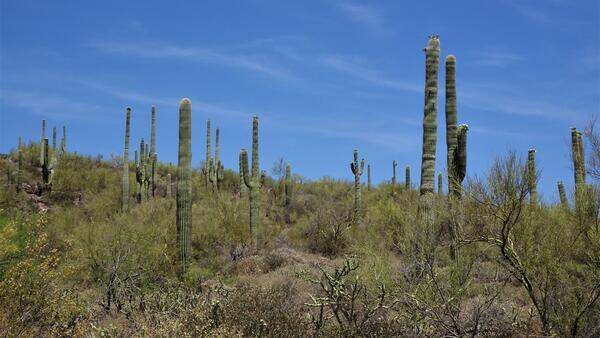Roadtrip
“Nothing can be more improving to a young naturalist than a journey to a distant country.” — Charles Darwin
Darwin wrote that line soon after returning from his five-year voyage on the Beagle, a voyage that provided insights that eventually led to the development of his theory on “The Origin of Species by Means of Natural Selection." He never stepped beyond the shores of England again. Seasickness plagued him every day he was aboard the Beagle, and once back in England he focused on establishing himself as a respected scientist, and starting a family, tasks which he devoted the rest of his life to.
Alfred Russel Wallace, who independently developed the same theory, started in the Amazon, then traveled throughout Indonesia, then referred to as the Malay Archipelago (where his “Origin” theory took shape), and never lost his wanderlust despite chronic malaria, later traveling throughout much of North America. Along with his part in the development of the Origin of the Species – his short essay on the topic was co-published with Darwin’s correspondence with colleagues about his ideas about evolution and natural selection, and then spurred Darwin to complete the book he had been refining for 20 years – Wallace is also credited with the development of a new field of science, Biogeography, the study of how animals and plants are distributed around the world.
The point here is that traveling with the eyes of a naturalist fosters insights, challenging or supporting, but always improving upon preconceptions about patterns in nature that might have had their beginning with surveys of biodiversity in a local area. Traveling to distant shores with the eyes of a naturalist is enriching on many levels, however, one need not cross oceans to yield new insights. Road trips that traverse rainfall and/or temperature gradients can be just as enlightening.
A road trip across the deserts of California into Arizona, provides naturalists the opportunity to identify what defines the Colorado Desert compared to the Sonoran Desert. Rainfall patterns between these two deserts are distinct, but that distinctness follows a gradient, not the sharp line depicted on ecoregional maps. The Colorado Desert is hotter and more arid, with significant rainfall occurring mostly in the winter months, December through early March. The Sonoran Desert is still hot, but its rainfall is bimodal, about half comes in the winter with the same storms that wet the Colorado Desert, but there is a second rainfall period, the summer monsoons, which fall primarily in July and August, typically among the driest months in the Colorado Desert, although the occasional monsoon does occur there.
Climbing east out of the Coachella Valley, the western border of the Colorado Desert, on Interstate 10 the typical desert plants are clearly evident, but in the current drought they are parched. Creosote bush, ocotillo, and California barrel cacti are spread across the desert flats and hillsides. In washes, blue paloverde and ironwood form thin ribbons of green amid the dull brown creosote bush flats. In mid-May, the paloverde are nearing the end of their flowering period, with just a few yellow flowers remaining. However, the ironwood trees are at their peak in blooming with each tree a burst of pale lavender flowers. Migrant birds, leaving their winter homes in Mexico, Central America, and further south, time their migration to coincide with the blooming paloverde, ironwood, and honey mesquite. Those flowers provide nectar and insects, vital food if the migrant birds have any chance of reaching their breeding grounds further north. The migrants travel up the Colorado River and then head west across the Colorado Desert and then shift northward again until they reach their breeding grounds, anywhere from California to Oregon to Washington to Canada, and to Alaska. Making it across the desert is their first major challenge, and timing their flights with the blooming paloverde, ironwood, and mesquite is critical to their success.
Continuing east, past Desert Center and the junction with Highway 177, the California barrel cacti begin to disappear (although they continue north and east into the Mojave Desert), and the paloverde, ironwood, and mesquite have escaped the confines of desert washes and now join the creosote bushes and ocotillo on the bajadas and hillsides. Presumably there are more monsoonal rains here, at least enough to support these legume forests. They now provide a broad target for migrating birds. There is a growing understanding that they also provide an important part in sequestering carbon from the atmosphere and sending that carbon deep into the soil where it may stay for many millennia as long as these soils are left undisturbed. These trees and the creosote bushes provide a critical service in our current climate crisis, a service that is lost when these rich desert lands are graded for any form of land development, including fields of solar collectors.
Further east, across the Colorado River, new plants gradually make their appearance. Saguaro cacti and foothill (or yellow) paloverde show up within just a few miles of the river, and a bit further east a different species of mesquite, velvet mesquite, becomes increasingly common, joining the blue paloverde, ironwood, and honey mesquite. As these species increase in abundance, they signify a transition from the Colorado to the Sonoran Desert. Again, this transition is one of degree, not a sharp line on the map, a transition that appears to be tied to the regularity of summer monsoons. The saguaro cacti are in bloom (it is mid-May). Those huge, gaudy flowers are primarily pollinated by long-nosed bats, so they must be here as well. The saguaro also provides home sites for Gila woodpeckers, gilded flickers, elf owls, Harris’s hawks, and others. Their presence fosters the addition of many additional species and so these cacti are keystone species, adding to the biodiversity of the place where they grow.
Now, passing Phoenix and heading north on I-17, we begin a gradual climb that will take us out of the Sonoran Desert, crossing the Mogollon Rim and into the pine forests of the Colorado Plateau. Climbing out of the metropolis of greater Phoenix, the vegetation becomes denser, including the Saguaro cacti and yellow paloverde. Still, our old friends, the blue paloverde, ironwood, and honey mesquite are still here, along with creosote bush, ocotillo, brittlebush, globe mallow, teddy bear cholla and others. And there are more additions. A new barrel cactus, the fishhook barrel and a new cholla, chain-fruit cholla, have joined the plant community I can identify at 70 miles per hour. I am sure that there are many more species additions, I just need to find a trail to hike. These additions as well as the overall greater plant density is again related to rainfall, increasingly dependable and stronger monsoons, as well as cooler temperatures. Then, further north on I-17, the desert abruptly disappears. No gradual transition, in nearly a blink of an eye the cacti are replaced by grasslands and scattered shrubs that can handle regular wildfires spawned by monsoonal lightening and increased rainfall (more fuels to burn), events that desert plants cannot tolerate.
The Sonoran Desert is easily defined by rainfall patterns that allow Saguaro cacti and foothill paloverde and long-nosed bats, and elf owls and more to thrive. The Colorado Desert is also defined by rainfall patterns and by the lack of all those species that depend on monsoons. This sensitivity to patterns and amounts of rainfall that defines our deserts also may mean that with climate change, the character and boundaries of our deserts may change as well. It is increasingly clear that the Colorado Desert and Mojave Desert are getting drier, more arid. Species there will need to shift to relatively cooler-wetter higher elevations or perish. What is less clear to me is how climate change will impact monsoon rains. If those rains increase, will the Sonoran Desert expand? If the monsoons decrease, will the differences between the Colorado and Sonoran Deserts also decrease? Or will the annual grasslands and fire increase?
Nullius in verba
Go outside, tip your hat to a chuckwalla (and a cactus), think like a mountain, and be safe.

